The word ‘Underworld’ may conjure scary images of dark caves or maybe a little claustrophobia, but in the Yucatán Peninsula of Mexico, the Underworld is a place of majestic beauty.
What makes the land below the surface a place you want to visit? It is all about the underwater cenotes caves and the secret subterranean world of groundwater pools.
What is a cenote in Mexico?
The word cenote comes from the Ancient mayans who originally called these geological formations Dz’onot – which means ‘cavern with water’.
Pronounced say-no-tays, cenotes are naturally occurring freshwater sinkholes that form when the ceiling of underground caves collapse allowing the world above to enter the world below through intricate cave systems.
Beneath the surface is crystal clear water of magnificent colors and limestone bedrock walls that climb skywards like cliffside amphitheaters.
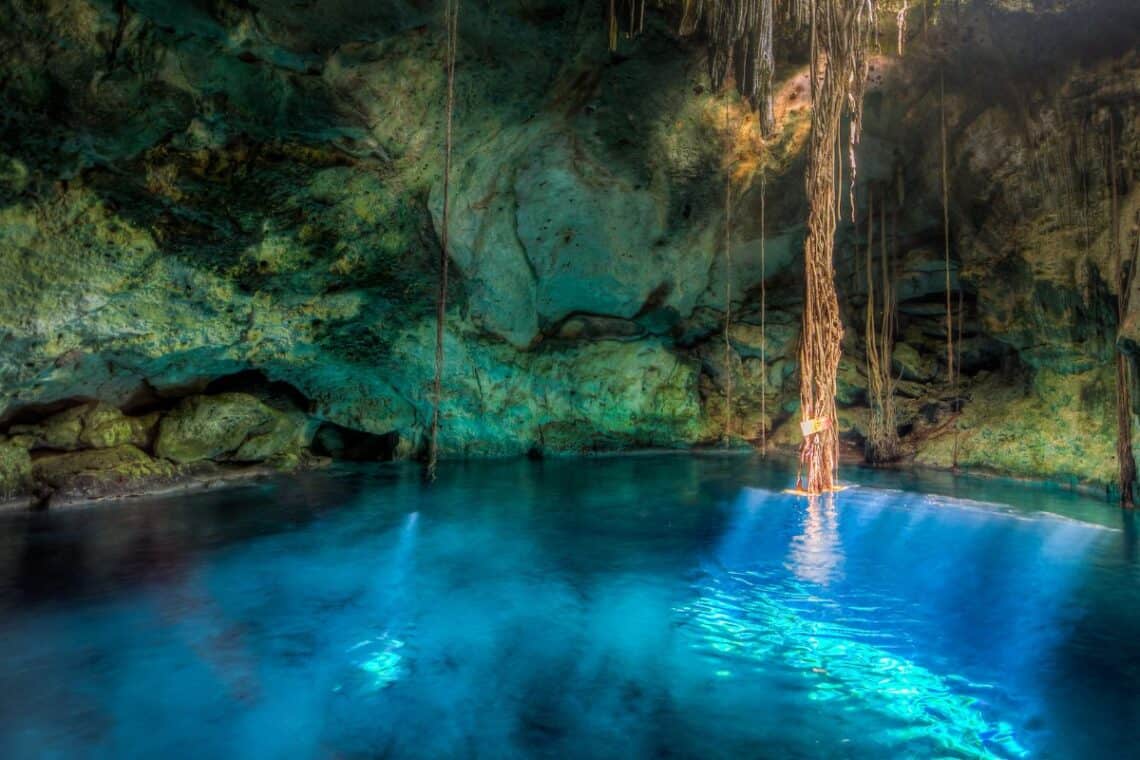
Turquoise pools of water call to you like a beacon of utopia. Tree roots dangle from the ceilings dipping down into the crystal clear waters.
It looks as if you have stumbled upon a secret paradise, and the Yucatan Peninsula has over 6000 cenotes to experience!
Why does Mexico have so many cenotes?
Well, the story begins 65 million years ago when a large meteor struck earth in the Gulf of Mexico near the modern day city of Chicxulub.
It has been theorized that this 6 mile wide meteor crashed into the earth with such force that it released debris and dust into the atmosphere compromising the availability of sunlight. Many theories suggest that this led to the extinction of non-avian dinosaurs.
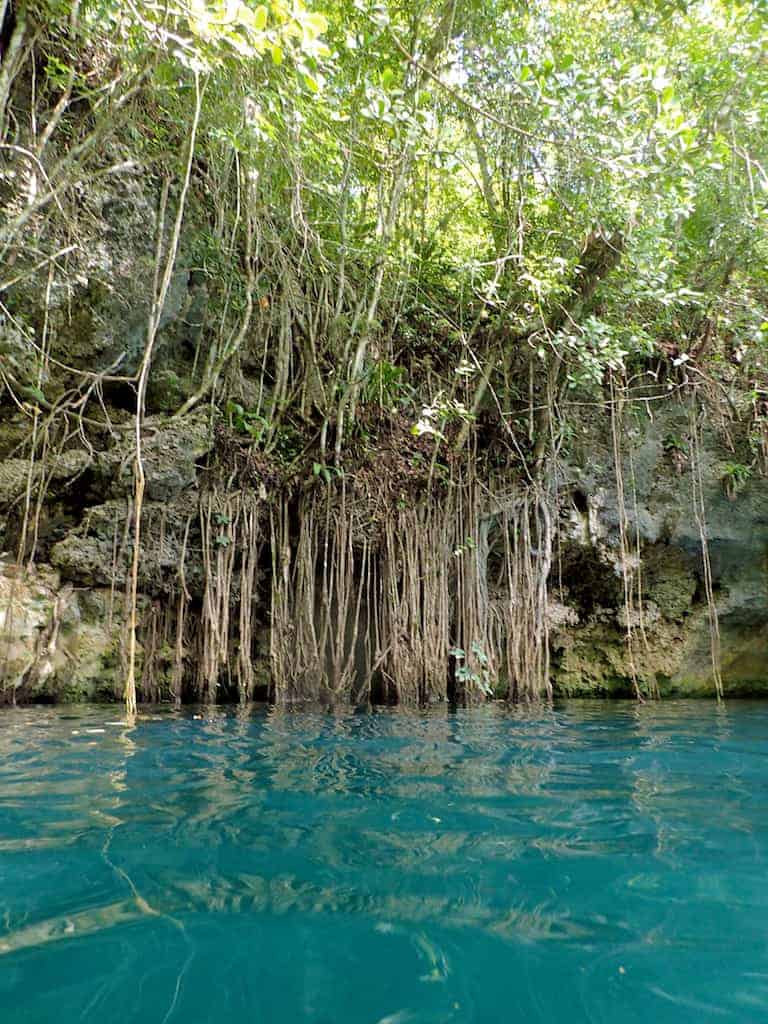
The crater left behind is known as the Chicxulub Impact because of its vicinity to the city of Chicxulub. The crater impact spans 110 miles and formed what is referred to as the Ring of Cenotes in the Yucatan Peninsula.
How do cenotes form?
Natural sinkholes caused by the crater produced carbon dioxide which formed naturally from the organic events happening within the hole. It caused the breakdown of rock, in turn weakening the limestone and allowing large portions to collapse and fall into the water table below.
The world beneath the surface was exposed and cenotes were born.
Over time, cenotes continued to develop along the rim of the impact radius forming a semi-circle around Chicxulub, near the epicenter.
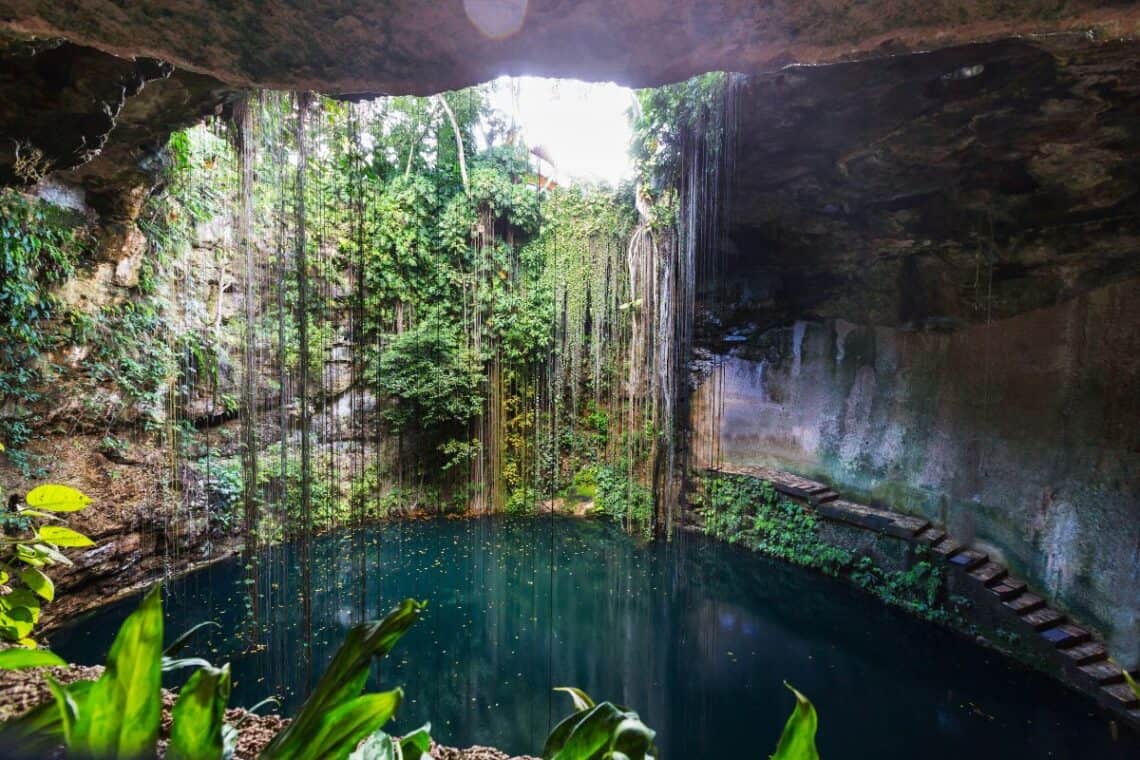
These extravagant pools were once sacred places to the Mayans. Civilizations were built around these water sources and many were the location for religious and sacrificial offerings.
These cenotes in Mexico will continue to change over time, but for now, they are an incredible attraction that bring people from around the world to witness their rare beauty.
Are the different types of cenotes?
Yes, actually there are three types of cenotes found in Mexico:
Open Cenote
An open cenote is one where the water is exposed to the air allowing natural light to enter the cave. These are the most popular type of cenote for swimming and enjoying the views.
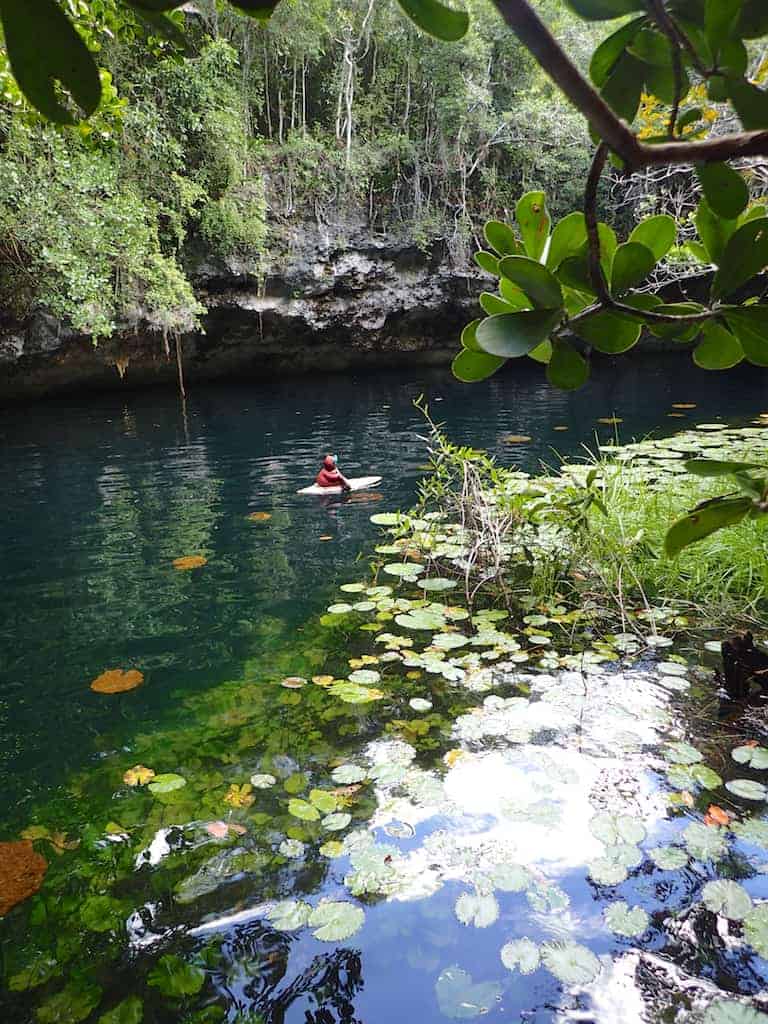
Semi-Open Cenote
A semi-open cenote is a mix between an open and a cavern cenote. They typically have a large opening that allows natural light in, but also has areas that are covered by a rock ceiling.
Cavern Cenote
A cavern cenote is one that is mostly underground with only a small opening at the surface.
Each cenote is unique in its own way but there are technically four main shape that occur.
Jug/pit cenote
There is a small opening that leads to the water below with much of the ceiling still intact. Think of the mouth of a jug. There is a small opening, but the jug widens below the bottleneck.
Cylinder cenote
There is no ceiling left and the rock walls rise vertically. Cliffside leads straight down to the pristine waters below.
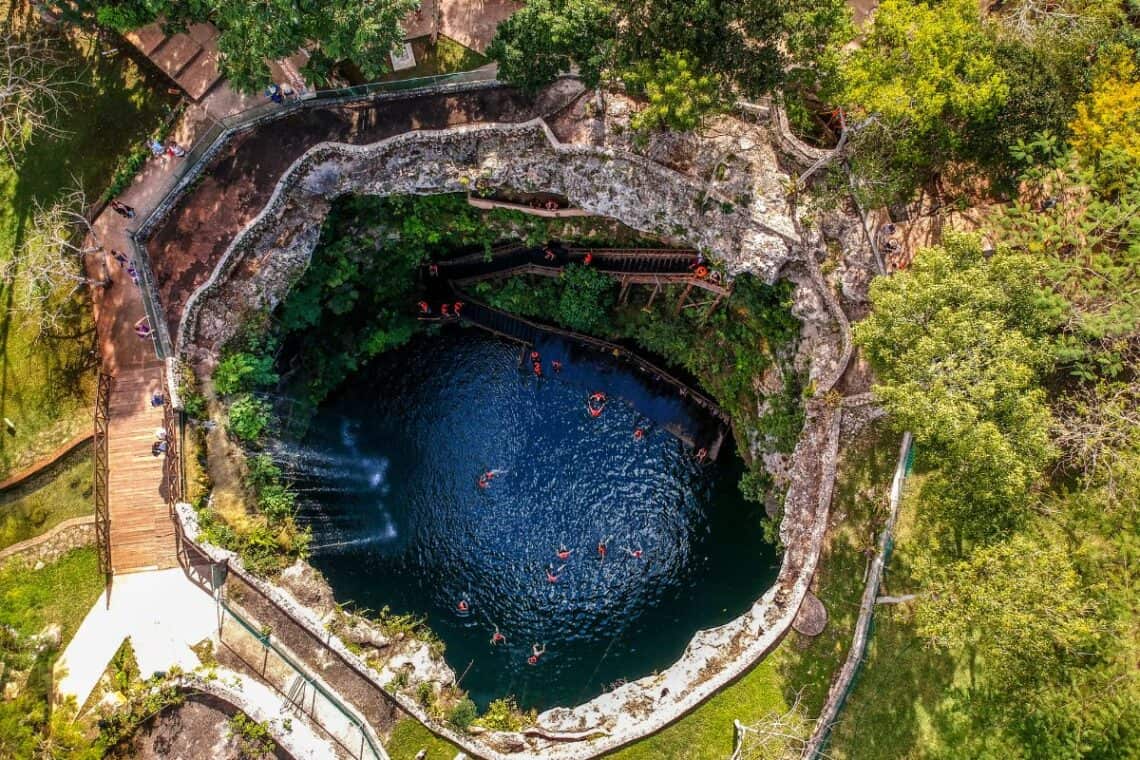
Basin cenote
This cenote has less depth than others and resembles a sink basin.
Cave cenote
Within the waters there is an opening or multiple openings that lead further beneath the surface, mostly accessible by scuba divers. Some of the best cave cenotes are in Tulum Mexico.
Are cenotes only in Mexico?
Cenotes are most commonly associated with Mexico, where they were an important source of water for the Mayan people. But they aren’t exclusive to Mexico.
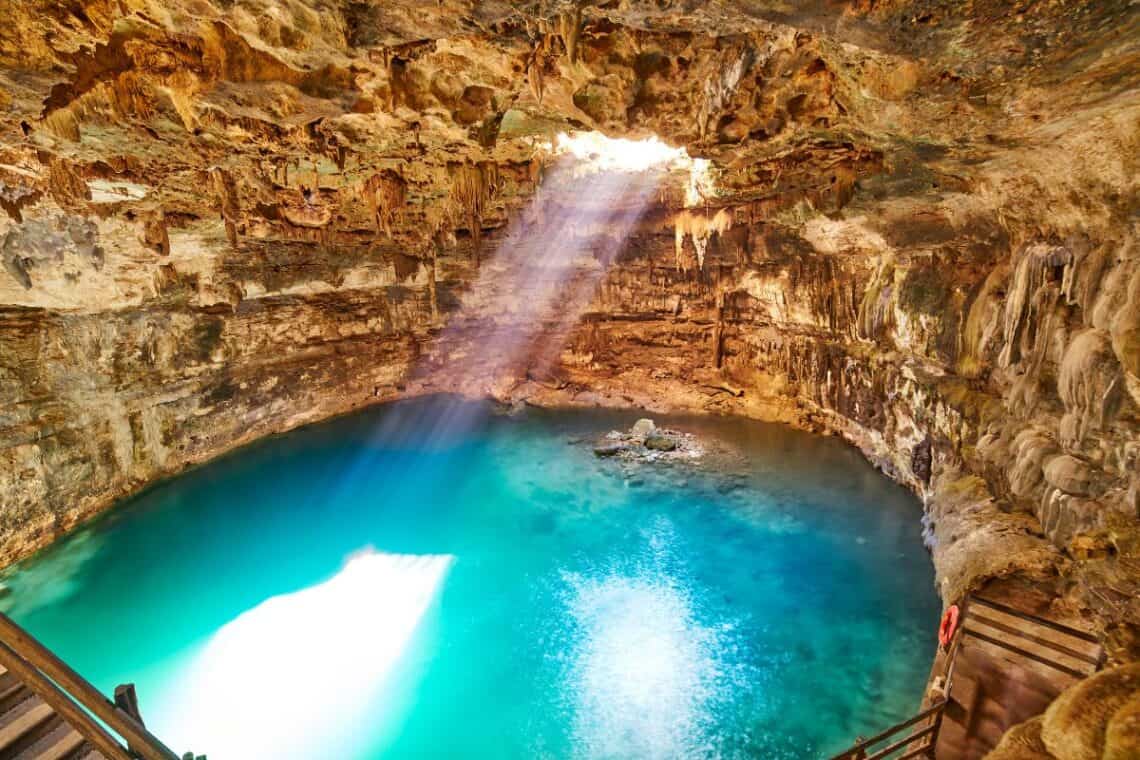
Cenotes can be found in other countries, such as the United States, Belize, the Dominican Republic, Canada, Zimbabwe and Australia, they are most abundant in Mexico.
As a result, cenotes are often referred to as Mexican caves or Mexican blue holes.
Are there crocodiles in Mexican cenotes?
The short answer is yes, crocodiles can be found in cenotes since they are native to the area.
There are two species of crocodiles that can be found in Mexican cenotes: the American crocodile and the Morelet’s crocodile.
The American crocodile is the more common of the two, and can be found in cenotes in the states of Yucatan and Quintana Roo.
The Morelet’s crocodile is less common, and is primarily found in the state of Quintana Roo. Both species of crocodiles are protected by law in Mexico.
But is it likely that you’ll run in to one while swimming? No, probably not.
However, if by chance swimming with a friendly crocodile was on your bucket list, you could always visit “Panchito” at Casa Cenote in Tulum.
Are there sharks in cenotes in Mexico?
These refreshing oases are popular spots for swimming, snorkeling, and scuba diving. But are there sharks in Mexican cenotes?
The short answer is yes and no. Sharks are saltwater creatures, and cenotes are fresh water.
Of course we have bull sharks that like a bit of both and the warm waters along the coast of Playa Del Carmen actually becomes a pregnant female bull sharks’ birthing ground every year, between November until March.
They congregate in these shallow waters, sometimes near cenotes, before giving birth to their young in deeper waters.
But generally, you will not find sharks in cenotes. In fact, there are very few large fish of any kind in these unique freshwater systems.
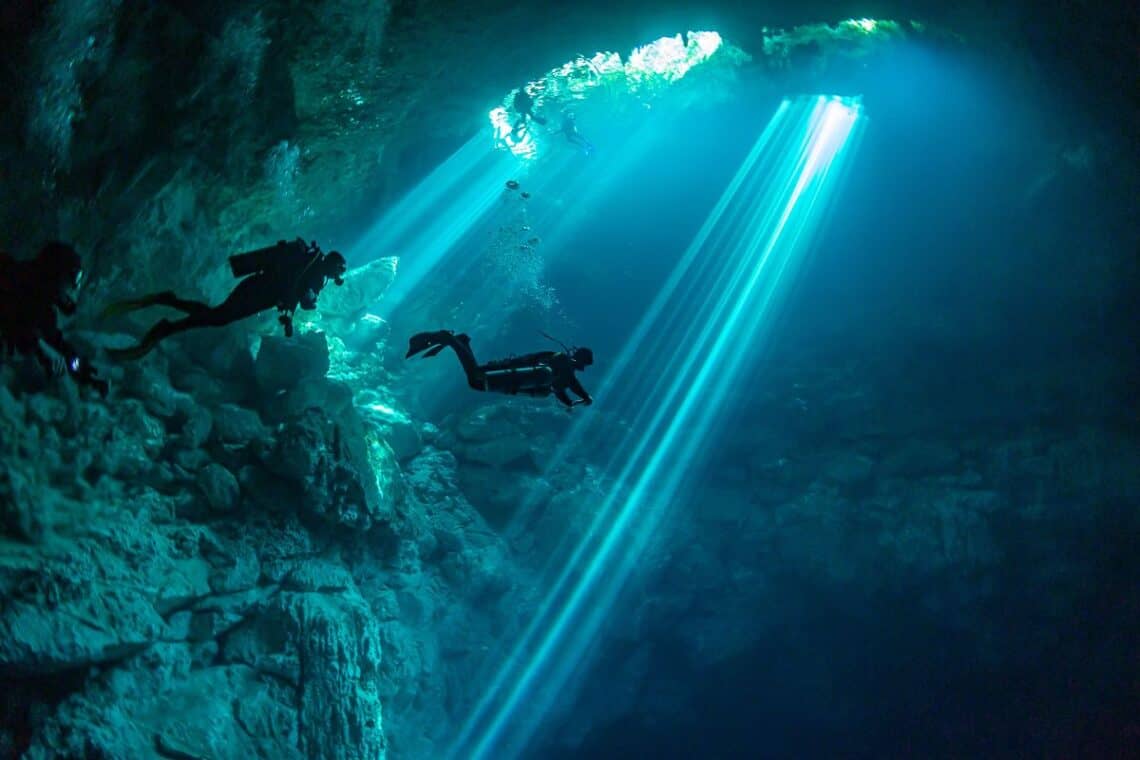
The main reason for this is that cenotes are often quite deep, and the water at the bottom is often too dark and stagnant for most fish to survive.
However, that doesn’t mean that cenotes are completely devoid of aquatic life. In addition to a variety of smaller fish, many cenotes are home to turtles, and even stingrays.
You may also run into fish that prefer stables environments like Pimelodid, Poeciliids, Cichlids, Caracid, aor the Synbranchid.
So while you’re unlikely to encounter any sharks on your next cenote adventure, you may still encounter some other fascinating creatures.
How cold are the cenotes in Mexico?
In general, cenotes are quite chilly, especially those that are fed by underground rivers. Going for a swim in a cenotes means taking a refreshing dip in what can sometimes feel like icy waters!
The temperature of the water can vary depending on the time of day and the weather conditions, but it is usually around 72-75 degrees Fahrenheit.
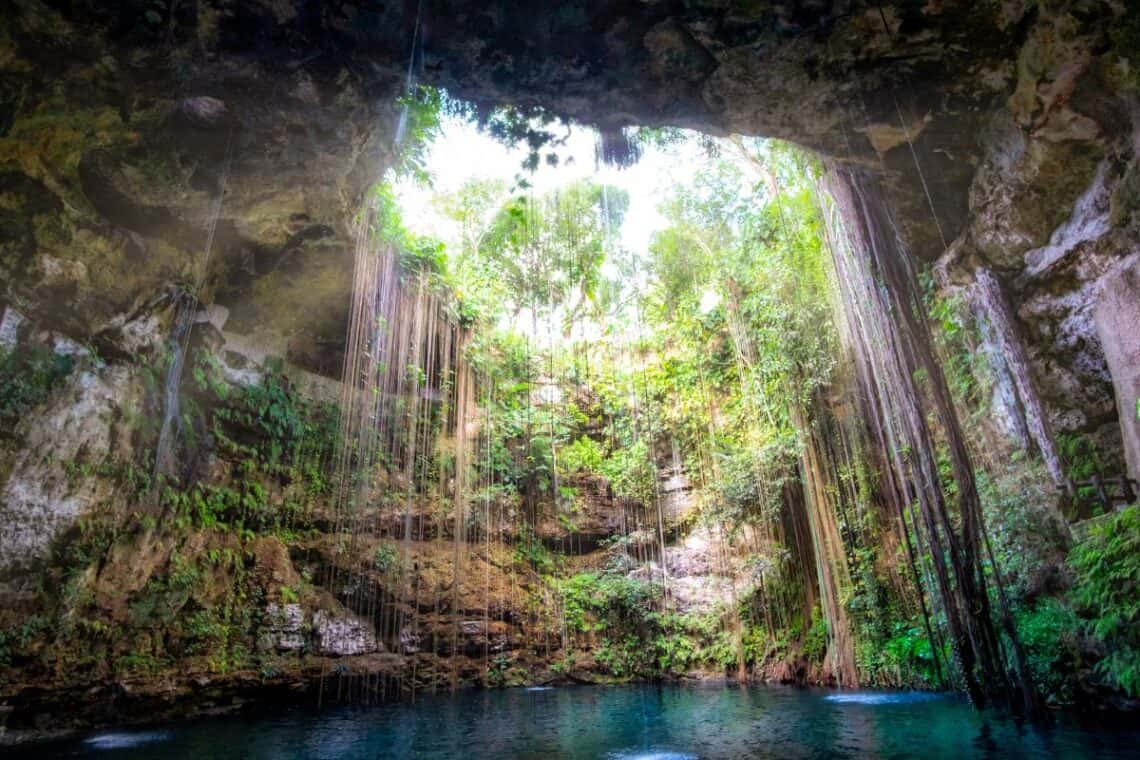
Cenotes that are located in open air and exposed to sunshine tend to be warmer than those that are shaded by caves or caverns.
Summer is the best time to visit since temps are warmer than winter and the crystal blue waters are actually quite refreshing compared to the 100+ degrees Fahrenheit heat Mexico is known for.
Xenotes Xcaret
While there are many cenotes you can explore on your own, if you happen to be staying at Hotel Xcaret or close by in Riviera Maya, I’d highly recommend you consider taking an adventurous excursion with Xenotes Oasis Maya Cenote Tour.
It’s the best way to explore these natural wonders with a unique experience you won’t soon forget.
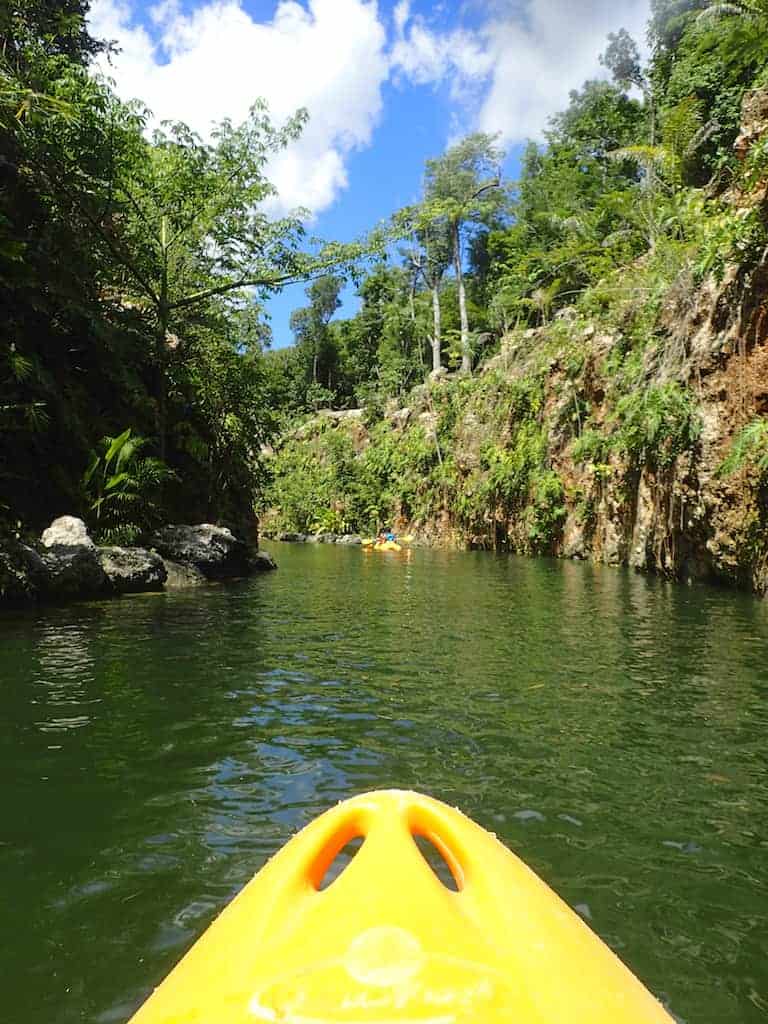
Explore some of the best cenotes in Mexico (that you CAN’T access on your own!) with fun guides and without having to worry about driving or lugging around adventure equipment.
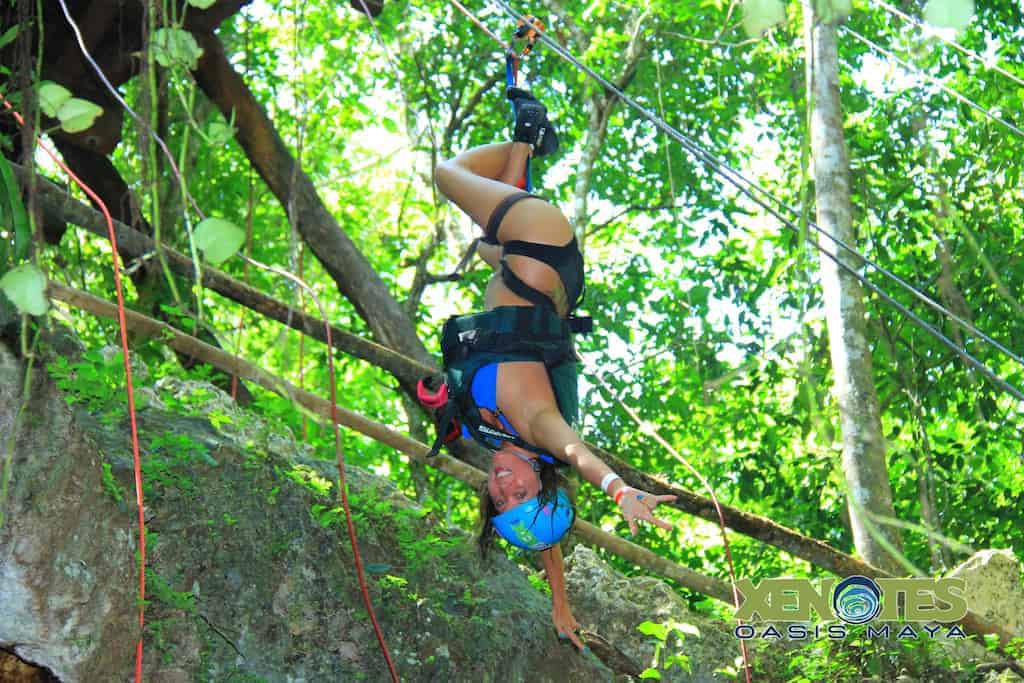
More than just taking a dip in a few Mexican cenotes, like you might do on your own – this tour adds in more opportunities to feed adrenaline junkies.
During the course of one adrenaline filled day you will visit each of the four types of cenotes, located on the Route of the Cenotes, between Cancun and Puerto Morelos.
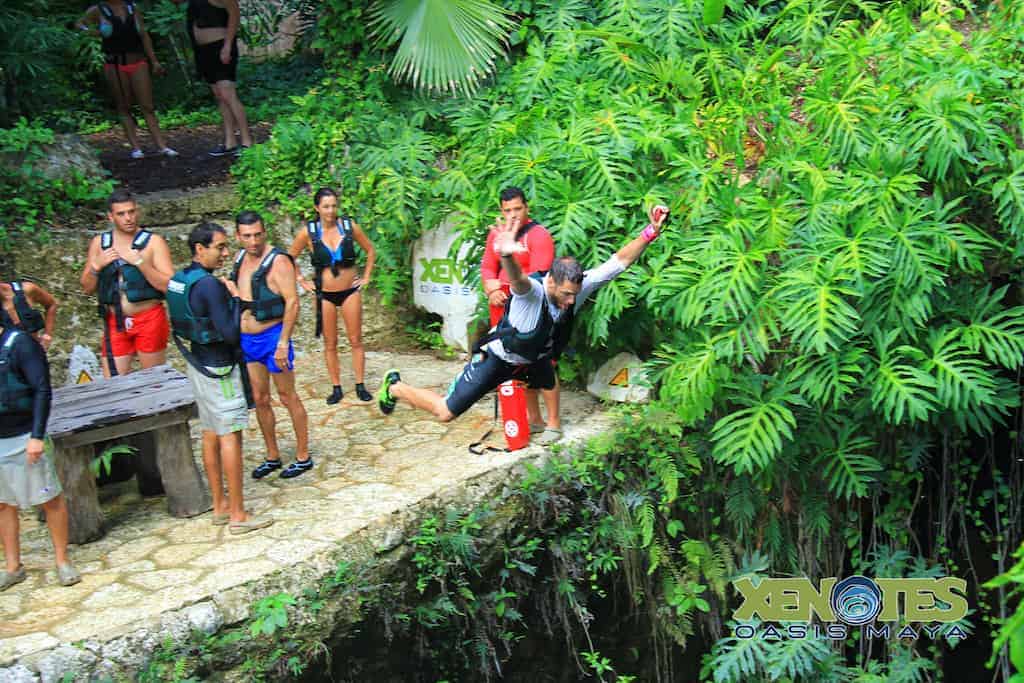
Dubbed using the Mayan word for Fire (K’ÁAK’), Earth (LU’UM), Water (HA’) and Wind (IIK’), each cenote has its own distinct personality and features fun activities like rappelling, zip-lines, snorkeling, kayaking and cliff jumping.
Yes, cliff jumping!
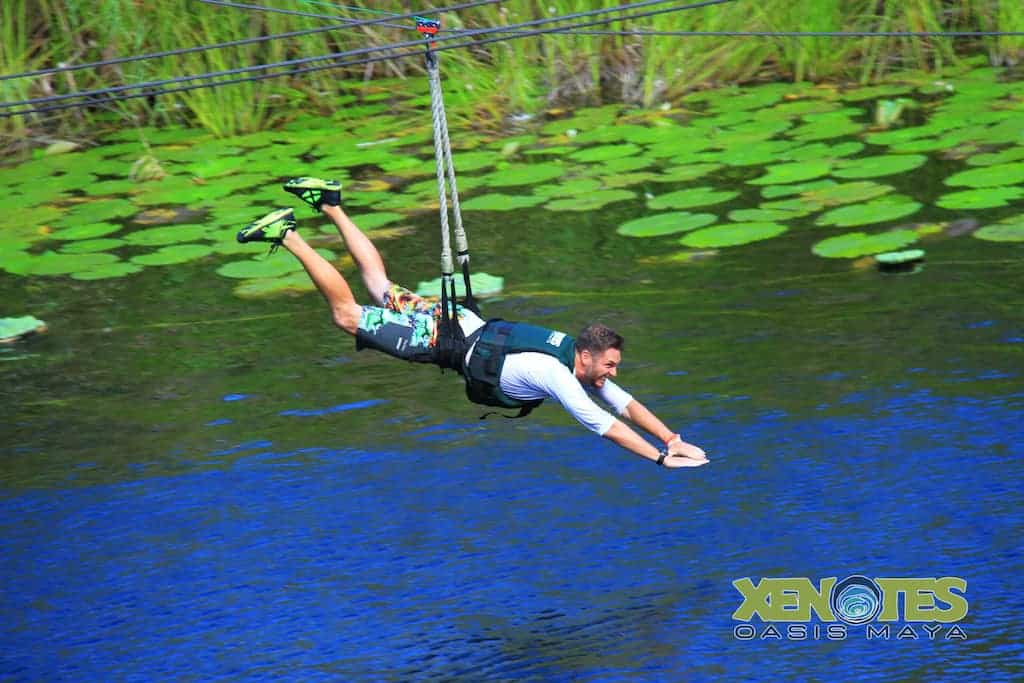
Suitable for all ages, as long as you’re comfortable being in water with life jackets, this is a must do activity and one you won’t soon forget.
My husband and I had an absolute blast (as if you couldn’t tell from the pictures) and recommend this tour to our friends and family often! It really is money well spent for the memories made.
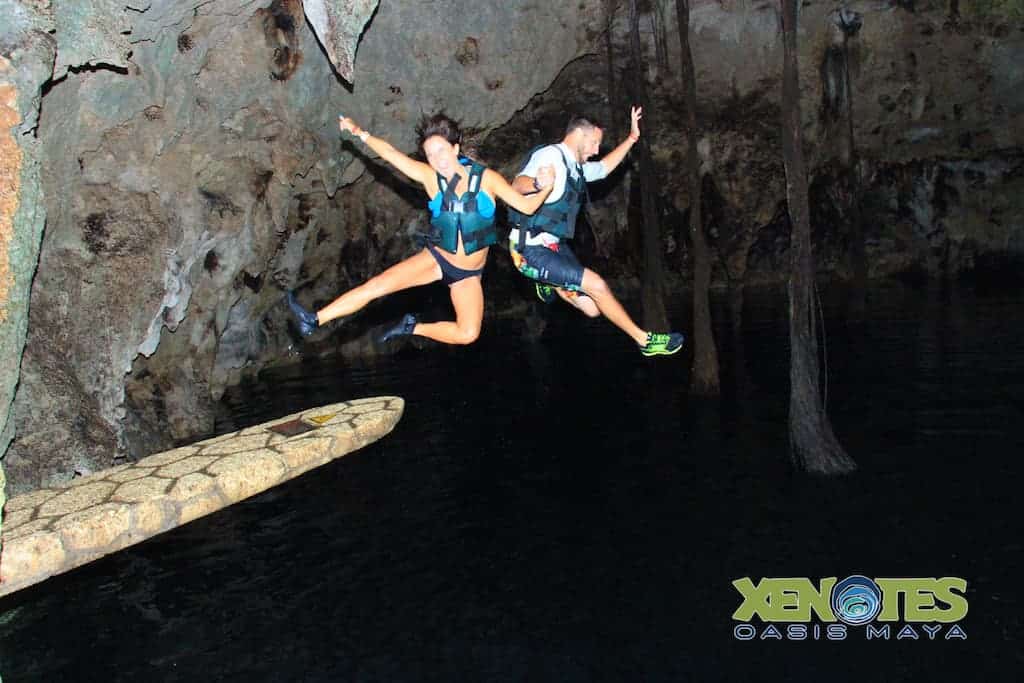
Immerse yourself in the same waters our ancient ancestors once worshipped….maybe you’ll find that they do, in fact, have magical powers.
Tour provided by Experiencias Xcaret. All opinions remain my own.
wow amazing i will put this on plan to visit it